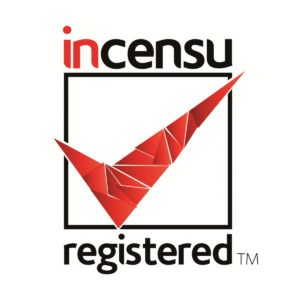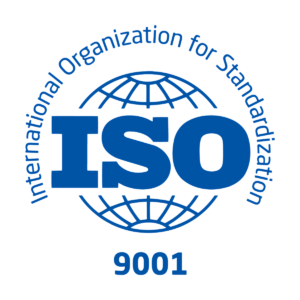Why Absence Management should be a key feature of any effective Time and Attendance system

Employee absence is a growing challenge for workforce managers in the UK. Whether from illness, stress, cars not starting, bad weather, childcare problems or absenteeism, the costs impact on the whole economy as well as the bottom line of individual businesses.
The question is: how can employers manage down their unplanned absence rate and improve productivity without adding an administrative burden?
Workplace absences: a growing post-epidemic problem
It isn’t easy finding accurate overall figure for absences because they occur for many different reasons, as anyone in a managerial role can testify. However, after two decades of going down, employee absence rates started climbing since 2020 and this trend is set to continue.
Figures from the Britain’s Healthiest Workplace survey indicated that just sickness-related absences cost the UK economy £77.5 billion in 2017, a 6.2% since the previous year, and that figure is likely to be much higher today.
Whatever the cause, most unplanned absences in the UK are for genuine reasons, but they can still be managed down.
The wider costs of unplanned absences
Even a small imbalance in a workforce at a critical period or point in a process can harm output, but the bill for unplanned absences doesn’t stop at lost productivity; it includes extra overtime, the cost of outsourced cover, admin time and lost sales.
Regular staff shortages also lead to a drop in the quality of work, more customer dissatisfaction and lower workplace morale, especially when some employees are routinely going absent.
Why is it essential to have an absence management system at your workplace?
When times are difficult, it becomes even more important to have robust policies and systems in place for both planned and unplanned absences.
At the very least, managers should have the tools for scheduling, confirming attendance for being made aware of every employee absence.
From this base, they can identify patterns of excessive absences. HR can then apply their policies in response, whether through disciplinary action or support and guidance.
Gathering data to analyse absenteeism
In common with most business issues, the key to managing absences is accurate and timely data. It can be analysed using methods to give an overall picture as well as greater granularity on the size, nature and location of a problem:
Lost time rate: The percentage of total time lost compared to the maximum possible attendance over a period.
Frequency rate: Expresses the average number of absences per employee across an organisation or department.
Bradford factor: Measures the number of spells of absence for an individual, making it a useful metric for identifying persistent short-term absences and the level of disruption caused.
Managing absence to improve workforce wellbeing
An effective absence management system also fosters staff wellbeing, flagging up presenteeism, ensuring that sufficient leave is being taken, and seeing that no one is overworked, either through excessive workload or by an overreliance on a few key individuals.
For all these reasons, more firms are installing integrated, digital workforce management platforms that incorporate absence management functionality.
Synergy: Synel’s complete workforce management solution
Absence Management is a key feature of Synergy Time and Attendance, Synel’s suite of SaaS workforce management solutions. Tailored to an individual organisation’s requirements (workforce size, shift patterns, geographic dispersal etc), Synergy is a complete workforce management solution. It incorporates clocking in and out technology, staff scheduling software and absence tracking, to help minimise absences, improve efficiency and reduce costs.
According to Jasvir Sunnar, Head of Operations at Paramount Powders, based in west London: “We find the system to be an integral part of our business and takes a great load off senior management in tracking employment attendances and times when clocking in and out; we would find ourselves doing a lot of manual logging without this technology.”
Synergy and Absence Management
Absence Management offering the flexibility to set up specific absence codes, exceptions and rules for individual workplaces, generating valuable data to be analysed and reported, giving valuable insight into your workforce.
Synel customers find Synergy T&A particularly valuable for holiday tracking. It lets managers see quickly when people have planned holidays, and sets rules for holiday taking, for example limiting the number of people in one department allowed to take leave at the same time.
Absence Management can also keep track of sickness and gains insight into trends for unplanned absences using the Bradford Factor.
The system includes biometric data-reading options and can be linked to an employer’s personnel database to streamline processes and minimise administration costs.
Accessible via mobile app, managers can see real-time data on any device, anywhere in the world. An intuitive information dashboard also breaks data down by department, team and location.
Empowering managers
When integrated within Synergy, Absence Management collates large amounts of accurate data for analysis, allowing managers to:
- Improve communication around planned absences
- Gain a real-time picture through request/authorisation visibility and live status tabs for individuals.
- Identify absenteeism patterns and take proactive steps to improve attendance.
- Empower employees, with self-service options to view and request time off, submit absences and check their own hours and accruals.
- Introduce online approval to streamline processes and enable paperless tracking and digital audit trails.
- Access records and generate reports more easily.
- Reduce the administrative burden of tracking and managing the accrual and use of holidays and TOIL.
- Annualise hours, tracking and managing employee absences over an entire year.
How can your organisation manage staff absences?
At a time of increasing financial burdens on all organisations, private and public sector, turning a blind eye to staff absences is no longer an option.
An accurate and efficient absence management system is critical to ensure your workforce operates at optimal effectiveness, but also within the bounds of human factors and wellbeing good practice and the law.
To find out more about how an integrated absence management system can help you reduce staff absences, boost productivity and cut payroll costs, try our free demo or contact our team for a free consultation.










